teaching roles : ค้นหาหนังสือธรรมะ หน้า 18 / 22
หน้าหนังสือทั้งหมด

58
The Significance of Giving in Difficult Times
45 AN 9.20, PTS: A IV 392: translated from the Pali by Thanissaro Bhikkhu
46 The Commentary states that Anathapindika is here referring to alms that he gives to the poor; his alms to the Sangha remain
This passage discusses a teaching from the Buddha to Anathapindika, emphasizing that even in times of famine when one can only offer coarse food, the act of giving remains valuable. The commentary hig

7
ธรรมะธารา วารสารวิชาการทางพระพุทธศาสนา ปีที่ 6 ฉบับที่ 1
ธรรมะธารา
วารสารวิชาการทางพระพุทธศาสนา ปีที่ 6 ฉบับที่ 1 (ฉบับรวมที่ 10) ปี 2563
and extraordinary practice.
The patterns of mind development in these five meditation
lineages were established arou
วารสารนี้นำเสนอการพัฒนาจิตใจผ่าน 5 สายการทำสมาธิที่มีรากฐานจากบริบททางพระพุทธศาสนาในศตวรรษที่ 20 โดยเน้นความเข้ากันได้ของแนวคิดจากต้นฉบับพระพุทธศาสนา แม้เป้าหมายหลักคือการเข้าถึงนิพพาน แต่ทั้ง 5 สายก็

29
The Timeless Teachings of the Buddha
after I leave this world, my Teaching (the Dhamma) will be your teacher in my place.”
The Buddha blessed us with his Teachings and his sense of Discipline to carry us forward in his place. The gifts
After leaving this world, the Buddha offered the teachings of the Dhamma as a guide for his followers. His teachings have withstood the test of time, showcasing their timeless relevance. The commitmen

63
Understanding the Dynamics of Body and Mind through Dhamma Teaching
Meeting #10
04 February 2010
I am here today with a friend and volunteer to the Wat, Jane Welfar. She has been helping various programs here for the past three years, and literally gave up her li
This meeting revolves around a farewell to a dedicated volunteer, Jane Welfar, who has devoted three years to assisting at the Wat. The discussion focuses on Luang Por's insights into the nature of ex

84
The Virtue of Abstaining: Bhojana Sutta
The picture contains the following text:
---
The Virtue of Abstaining
8. Bhojana Sutta
The prudent person giving life, strength, beauty, quick - wittedness - the wise person, a giver of happiness
The Bhojana Sutta emphasizes the importance of virtuous living and the impact it has on one's life. By giving life, strength, beauty, and happiness to others, an individual cultivates their own happin

92
The Victory of Abandoning: Insights from the Dana Sutta
The Victory of Abandoning
9. Dana Sutta
Those 6 things Then, having exhausted that action, that
power, that status, that sovereignty, he is a returner,
coming back to this world.
7. "-- but with the
The Dana Sutta presents profound insights on the nature of giving and its consequences in the spiritual journey. It describes how the mindset behind acts of generosity can influence their outcomes—whe

31
Khun Yai's Vision for a Meditation Center
and her team could have their own place to teach and practice meditation and to propagate Buddhism. Unfortunately, all Khun Yai had in her possession was her own meager savings of 3,200 Baht ($160 in
This text narrates the challenges faced by Khun Yai and her team as they aim to create a meditation center despite limited resources of only 3,200 Baht. With unwavering faith in the power of merit, Kh
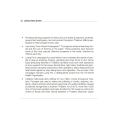
38
Ethics and Civic Training Programs in Thailand
- Providing training programs for ethics and civic duties to teachers, students, government employees, men and women throughout Thailand. Millions participate in these programs every year.
- Launching
โปรแกรมการฝึกอบรมจริยธรรมและหน้าที่พลเมืองในประเทศไทยมีผู้เข้าร่วมหลายล้านคนทุกปี โดยมีความสำคัญในการสร้างความตระหนักรู้เกี่ยวกับจริยธรรมและกฎหมาย รวมถึงโปรแกรม "Inner Dream Kindergarten" ที่สอนธรรมแล
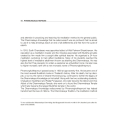
48
Phramongkolthepmuni: A Legacy of Dhammakaya Meditation
44 PHRAMONGKOLTHEPMUNI
and attention in practicing and teaching his meditation method to the general public.
The Dhammakaya Knowledge that he rediscovered was so profound that he aimed
to use it to h
Phramongkolthepmuni, originally Sodh Chandasaro, became abbot of Wat Paknam Bhasicharoen in 1918. Known for his meditation mastery, he organized workshops leading many to attain the Dhammakaya level.

19
การตีความคำสอนของพระโจคมะ
ศรัทธา ปิ๋ม มนะ และสติของข้าเจ้าไม่ได้ห่างจากคำสอนของพระโจคมะ 32
[พระโจคมะผู้มีปัญญา ประดุจแผ่นดิน เสด็จไปสู่ที่ใด ๆ
ข้าเจ้าก็อ้อนอ้อม[พระองค์คำนี้เสด็จ] ไปทางนั้น ๆ นั่นแล
32 สำนวนการแปลในอีก
บทความนี้วิเคราะห์การตีความคำสอนของพระโจคมะ โดยเน้นที่ศรัทธา ปิ๋ม มนะ และสติ ซึ่งไม่ห่างจากคำสอนของพระพุทธเจ้า การแปลและความหมายของคำว่า 'ย่อมไม่หย่อนไป' ชี้ให้เห็นถึงความสัมพันธ์ระหว่างคำสอนกับการปฏิ

23
The Path to Nibbana and the Challenges of Lay Life
dure six arduous years of self-mortification before discovering Niramisasukha. During this period, the Buddha came close to death more than once, but when he finally found true happiness, he chose to
After six years of self-mortification, the Buddha discovered Niramisasukha, close to death multiple times. He emphasized living by the Dhamma for true happiness, urging ordination to escape worldly po

54
Understanding Kamma and Its Impact on Life Choices
"And what is Kamma? Kamma is action with intention. Am I always being mindful of what I am doing? Am I using my mind and listening to my mind? Am I listening to my outside voice or my inside voice? Th
Kamma refers to action with intention. It emphasizes the need for mindfulness in our actions and decisions, distinguishing between our external influences (kilesa) and our internal compassionate voice
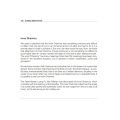
112
Understanding Inner Dhamma
Inner Dhamma
We used to perceive that the inner Dhamma was something profound and difficult to attain, that one had to put in an immense amount of effort and had to do it in a remote place in order to
Inner Dhamma was once seen as a profound, difficult achievement requiring immense effort in isolation. However, it is now understood that maintaining an alert, relaxed, and still mind allows access to
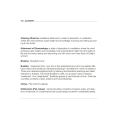
158
Understanding Dhamma and Enlightenment
Attaining Dhamma: meditative attainment; a state of absorption in meditation where the mind achieves super insight and knowledge; knowing and seeing according to the truths.
Attainment of Dhammakaya:
This content delves into the concept of Dhamma as a state of meditative absorption. It explains the attainment of Dhammakaya, where deep insight allows one to see the reality of life. Key terms such a

160
Understanding Transcendental Inner Bodies and Meditation
individual person possesses 18 transcendental inner bodies, which can be reached through advanced stages of meditative absorption. Once a person reaches the Dhammakaya, the purest of all transcendenta
This text discusses the concept of 18 transcendental inner bodies accessed through advanced meditation, reaching the Dhammakaya for profound insights. It also covers the Five Hindrances, which are neg
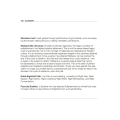
162
Glossary of Buddhist Terms
158 GLOSSARY
Mundane merit: merit gained through performance of good deeds, such as sweeping the temple, helping the poor, making charitable contributions.
Nibbana (Skt. Nirvana): the state of ultim
This glossary provides definitions and insights into crucial Buddhist terms such as Mundane Merit, which refers to merit from good deeds, and Nibbana, the ultimate state of happiness and enlightenment

166
Understanding the Tipitaka and Buddhist Concepts
Tipitaka (Skt, Tripitaka): Buddhist scripture. Tipitaka means the Three Baskets. They consist of the Basket of Discipline (Vinaya Pitaka) – rules and regulations of the Order of monks and nuns; the Ba
Tipitaka, or Tripitaka, consists of three main sections: Vinaya Pitaka, Sutta Pitaka, and Abhidhamma Pitaka, covering monks' rules, discourses on various human concerns, and psychological aspects of B

58
The Good and the Wicked: A Buddha's Discourse
At the end of the discourse, Anathapindika, the father of Culasubbhadda, approached the Buddha to invite him to have alms-food in his house the following day. But the Buddha replied that he had alread
In a profound dialogue, Anathapindika invites the Buddha for alms, but the Buddha declines, stating a prior commitment to Culasubbhadda. Confused, Anathapindika points out the geographical distance. T

22
The Pursuit of True Happiness
the desire of young people who seek happiness in companionship; once they find their match they are happy, but then later on comes the suffering. Suffering in the form of concern, worry, jealousy, pri
The text discusses how young people often seek happiness in companionship, experiencing initial joy that can later transform into suffering due to jealousy, pride, and disappointment. This can lead to

46
Understanding the Buddha's Teachings
"You're asking, 'Why is the mind coarse, boorish, or ill-mannered?' The mind is coarse because of attachment, anger, greed. People are really obsessed with stuff. But the Buddha's mind combines itself
In his teachings, the Buddha discusses the coarseness of the mind due to attachment, anger, and greed. He identifies three groups of people in response to his teachings: true believers, non-believers,
